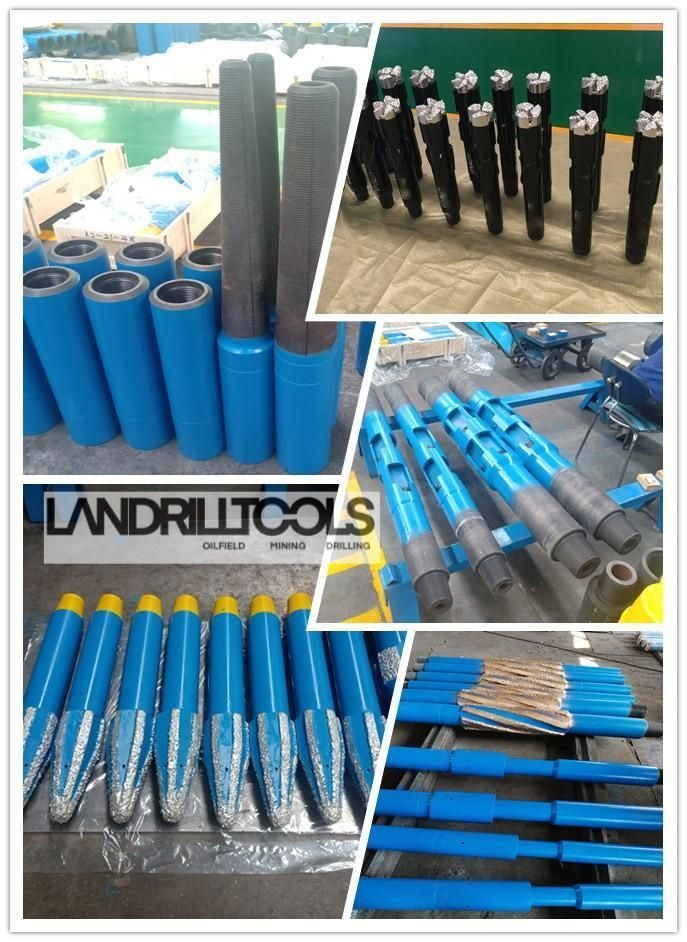In the oil and gas industry, the fishing of corroded tubing is a crucial yet challenging task. As tubing often succumbs to corrosion due to factors like harsh downhole environments, chemical reactions with fluids, and electrochemical processes, its structural integrity weakens, leading to breakage and falling within the wellbore. When conducting corroded tubing fishing operations, the following aspects demand special attention:
1.Precise Downhole Condition Assessment
Before any fishing operation, a comprehensive understanding of the downhole situation is essential. This includes accurately determining the location and extent of tubing corrosion, the shape and condition of the fish (fallen tubing), and the cause of its entrapment. Advanced logging techniques such as ultrasonic imaging and magnetic resonance imaging can be utilized to obtain detailed information about the downhole environment. For example, in Tahe Oilfield, due to the complex downhole conditions with high temperatures, high pressures, and corrosive fluids, a thorough pre – operation assessment is necessary to formulate an effective fishing plan. Incorrect or insufficient understanding of the downhole situation may lead to the selection of inappropriate fishing tools and methods, increasing the complexity of the operation.
2.Appropriate Fishing Tool Selection
Given the fragility of corroded tubing, the choice of fishing tools is critical. Tools that are too aggressive may further damage the already – weakened tubing. For instance, when the tubing wall is severely thinned by corrosion, using a tool with excessive gripping force can easily cause the tubing to break into multiple pieces. Instead, tools with gentle gripping mechanisms, such as retrievable fishing spears with elastic slips or fishing jars with rubber – lined gripping surfaces, are more suitable. In some cases where the fish has an irregular shape, customized or specialized fishing tools may be required. For example, for tubing with irregular fracture surfaces, a combination of a milling tool to trim the fracture and a suitable gripping tool for subsequent retrieval might be necessary
3.Stringent Operation Parameter Control
During the fishing process, strict control of operation parameters is vital. This involves controlling factors such as weight on bit (WOB), rotational speed, and pulling force. The WOB should be kept at a relatively low level, typically not exceeding 5 kN, to avoid overloading the corroded tubing and causing it to break. The rotational speed should also be slow, usually less than 30 r/min, to prevent excessive torque from damaging the tubing. Additionally, when applying pulling force to retrieve the fish, it must be done gradually and with caution. Sudden or excessive pulling can lead to the tubing fracturing or being pulled out of the tool’s grip. In the case of SZ 36 – 1A well in the Bohai Oilfield, precise control of these parameters was crucial for the successful retrieval of corroded and scale – stuck tubing.
4.Real – time Monitoring and Adaptability
Continuous real – time monitoring of the fishing operation is essential. Monitoring parameters such as tool torque, pulling force, and wellbore fluid properties can provide immediate feedback on the operation’s progress. Any abnormal changes in these parameters, such as a sudden drop in pulling force (indicating possible tubing breakage) or a sharp increase in torque (suggesting tool jamming or tubing entanglement), should trigger an immediate halt to the operation. At this point, the situation needs to be re – evaluated, and appropriate adjustments to the fishing plan, such as changing the tool or modifying the operation parameters, should be made. For example, if the monitoring shows that the torque is increasing steadily during the fishing process, it may be necessary to reduce the rotational speed or slightly adjust the position of the tool to avoid getting stuck.
5.Prevention of Secondary Damage
Avoiding secondary damage to the wellbore and remaining tubing is a top priority. During the fishing operation, care must be taken not to scratch or damage the casing while retrieving the corroded tubing. Using tools with proper guiding and protective mechanisms, such as centralizers, can help ensure that the fishing tool moves smoothly in the wellbore without colliding with the casing. In addition, when milling or cutting the corroded tubing (if necessary), measures should be taken to prevent debris from clogging the wellbore or causing damage to other downhole equipment. This may involve using appropriate wellbore cleaning fluids and ensuring efficient fluid circulation to carry away the debris.
6.Wellbore Fluid Management
The wellbore fluid plays a significant role in the fishing operation. It not only helps in cooling and lubricating the fishing tools but also affects the integrity of the corroded tubing and the wellbore. In some cases, the wellbore fluid may need to be adjusted or treated. For example, if the fluid contains corrosive substances that could further damage the remaining tubing or the fishing tools, corrosion inhibitors may be added. In situations where there is a significant amount of scale or debris in the wellbore, a suitable cleaning fluid or a fluid with enhanced carrying capacity may be required to effectively remove the contaminants and ensure a smooth fishing operation. In the process of fishing for corroded tubing in some wells, the wellbore fluid was adjusted in a timely manner, which improved the efficiency of the operation and reduced the risk of tool sticking.
In conclusion, corroded tubing fishing operations require a high level of technical expertise, careful planning, and strict implementation. By paying attention to these key aspects, the success rate of fishing operations can be significantly improved, minimizing the impact on oil and gas production and reducing potential economic losses.
Contact :May Ye
Mobile/Whatsapp:+0086-158 7765 8727
Email: landrill@landrilloiltools.com
Web: www.landrilltools.com
Post time: Sep-05-2025









 Room 703 Building B, Greenland center, Hi-tech development zone Xi’an, China
Room 703 Building B, Greenland center, Hi-tech development zone Xi’an, China
 86-13609153141
86-13609153141


